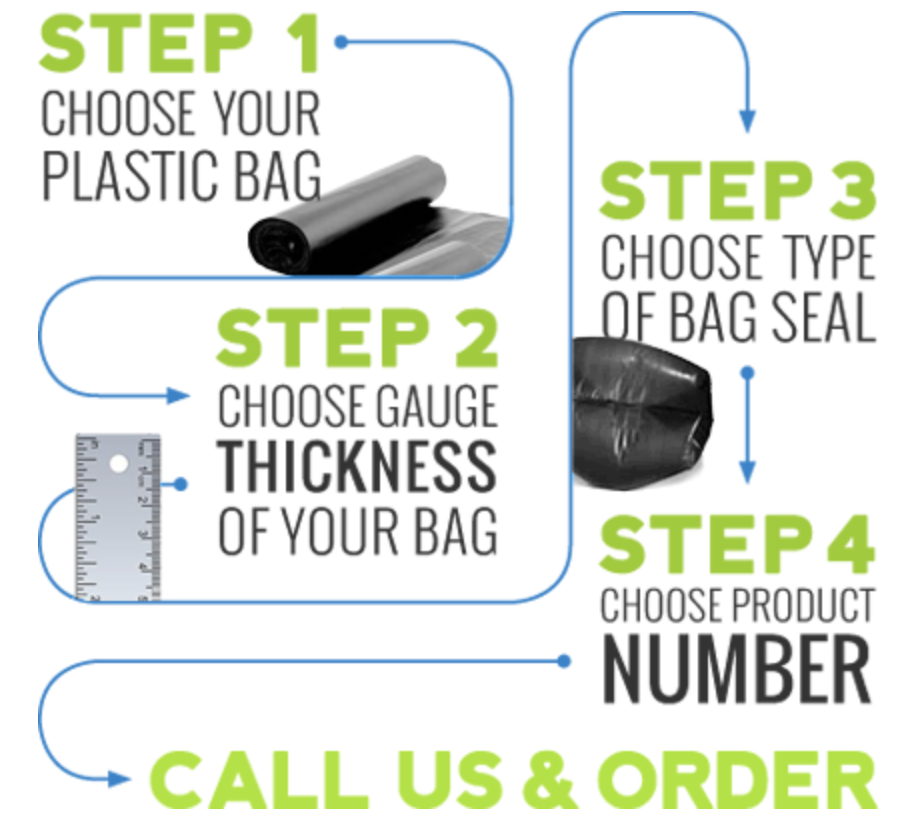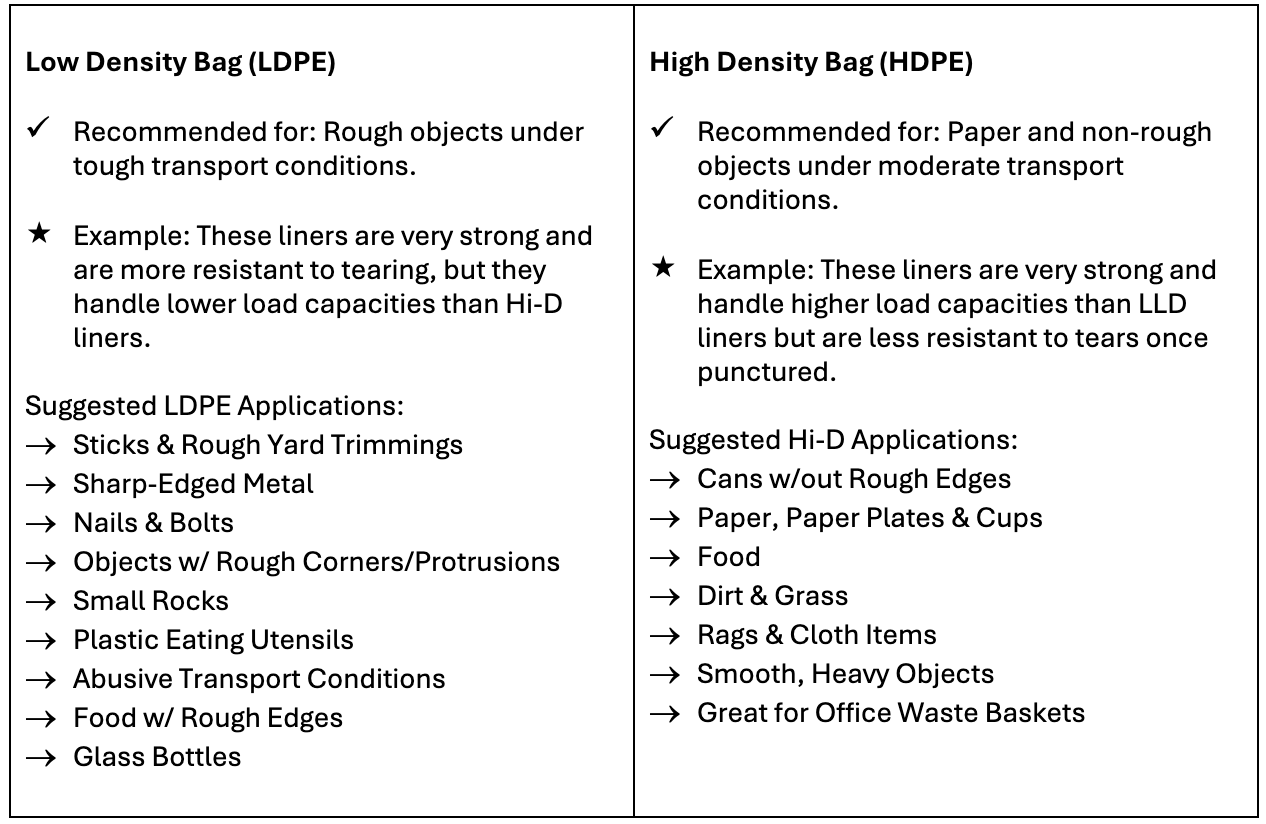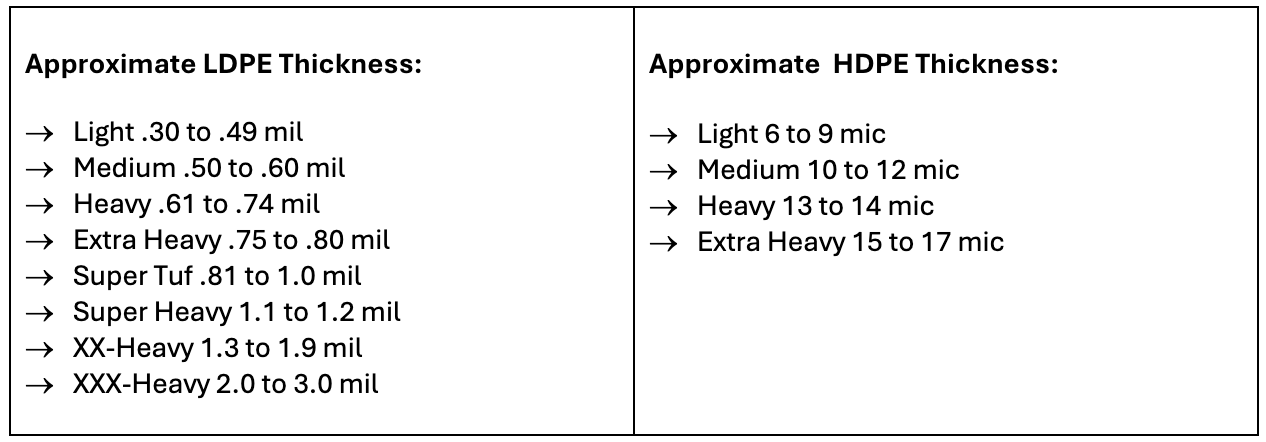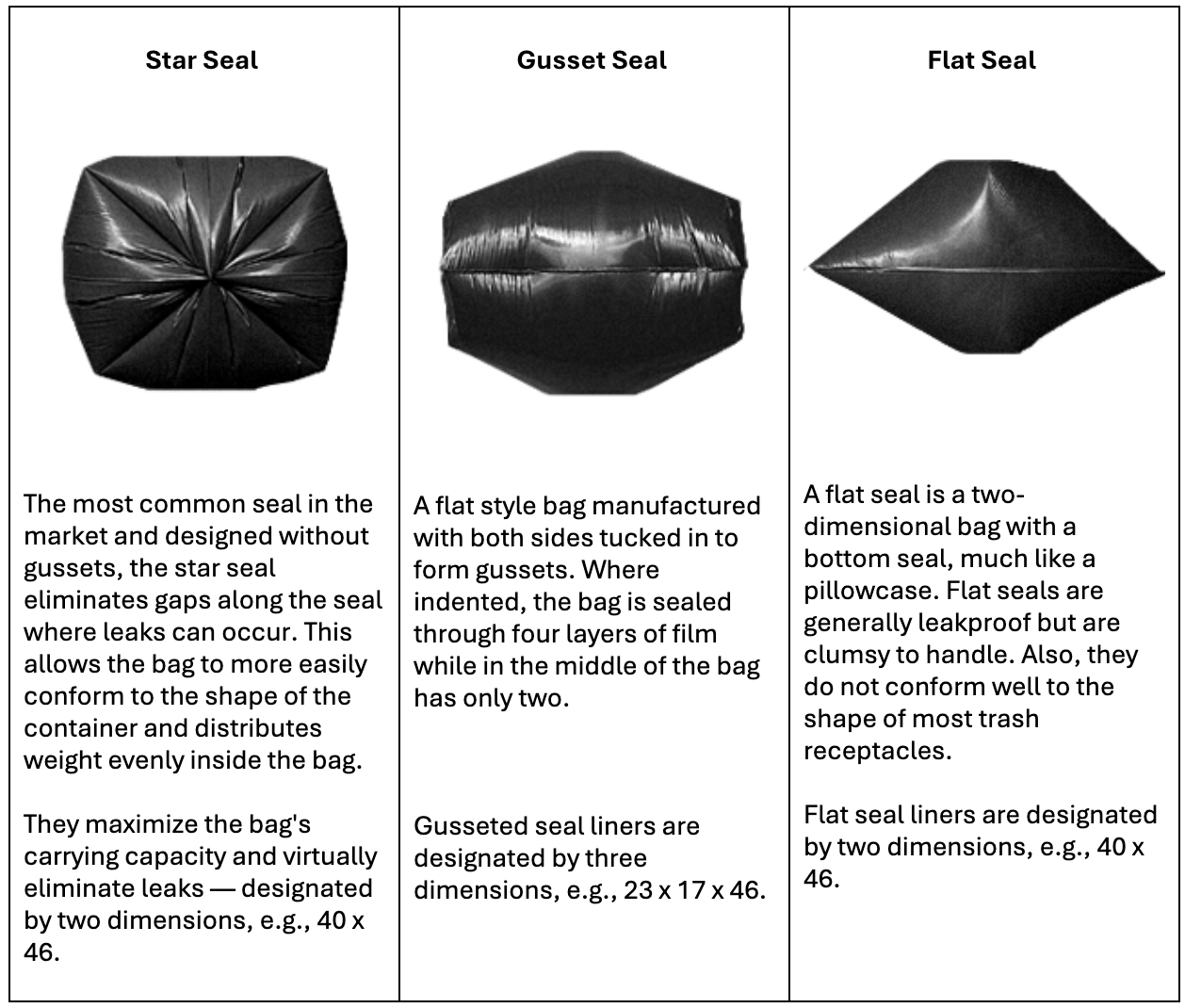When it comes to garbage bin liners, there's more to them than you might think. In fact, there are many different binliner uses and applications. The one you pick should depend on what you need it for.
Many times, homeowners and business owners end up spending too much on trash bags or don’t buy the right kind for their specific needs, like in warehouses, offices, or homes. This mistake can lead to wasted money, spills, and even safety problems. In this blog, we’ll help you understand the different types of garbage bags, how to choose the right one, and when to use them.
In the process of choosing a trash bag, one of the first choices you’ll need to make is whether to use high-density or low-density bin liners. Let’s look at some of the most common uses for each type.
High-Density vs Low-Density...What’s The Big Deal?
You'veprobably seen lots of trash bags in your life, but do you know what kind of plastic they're made from?Garbage binliners are made from two main types of plastic:
- High-density polyethylene (HDPE) and
- Low-density polyethylene (LDPE).
Understanding the difference between these two types of plastic can help you pick the right garbage bag for your needs. Let’s take a closer look!
.
HDPE Garbage Bags Uses
High-density garbage bags are thinner and less resistant to punctures compared to low-density trash bags, but are still effective. HDPE bags are a budget-friendly choice for homes and businesses with lots of light trash. In addition, HDPE garbage bags are temperature resistant and excellent at keeping in odors, perfect for trash that can be a bit...smelly.
To put it simply, these bags are…
- Cost effective
- Exceptional for light loads of trash
- Prone to sharp edges
- Not able to stretch well
High Density Garbage Bag Uses Include...
- Papers from office buildings
- Bathroom waste
- Towels and rags
- Any non-sharp objects
LDPE Garbage Bags Uses
While high-density garbage bags are good for light trash, low-density bags are better for heavier waste. These strong trash bags work great for food waste in restaurants or kitchens, cleaning jobs, building maintenance, construction sites, and warehouses.
These bags come in different thicknesses (or gauges) that are measured in mil (one thousandths of an inch), making them highly customizable. Although they typically come in black, feel free to research the different types of colored trash bags available too.
In addition to being very strong, low-density trash bags can stretch better than high-density ones. This means you won’t have to worry about sharp objects poking through the bag or liquids leaking out. That’s a problem we all want to avoid!
Also, low-density bags don’t “zipper” like high-density bags. If a tear or hole does happen, it won’t keep tearing and make the whole bag open up.
To put it simply, these bags are…
- Ideal for large and medium heavy-duty tasks
- Resistant to rips and tears
- Malleable
- Strong, durable trash bags
- At a higher cost compared to low density trash bags
Low Density Garbage Bag Uses Include...
- Food service disposables and plastic utensils
- Sharp metals and plastics
- Heavy industrial waste
- Liquids and food waste
- Heavy duty contractor grade trash bags
High Density vs Low Density Trash Bag: Which Should I Choose?
When it comes to throwing away trash, you have two main choices: low-density and high-density trash bags. Each type works best for different kinds of waste, so it’s important to know which one to pick.
HDPE garbage bagsare good for lighter waste. They are cheaper and great for places like bathrooms, offices, and places where you don’t have a lot of heavy garbage.They’re great for collecting small items like paper, wrappers, and other light waste.
LDPE garbage bags are better for heavy waste, like in warehouses or construction sites. They are thicker and can hold more weight without tearing.It can help prevent spills and messes.
If you think you're being clever by using a high-density (HDPE) garbage bag for heavy waste, you might want to reconsider. It could easily lead to spills that not only make a huge mess but might also land you in hot water—like facing lawsuits.
On the other hand, if your employees are using those thinner HDPE bags, they might just end up doubling, tripling, or even quadrupling the bags to avoid those leaks and spills. That sounds like a great way to raise costs.
So, instead of taking the risk, it’s way better to choose the proper garbage bag from the start.Remember, knowing when to use high-density and low-density trash bags can save you both time and moneyin the long run.
High Density vs Low Density GarbageBag: How to Choose?
If you are looking to choose a garbage bin liner, the process is relatively simple and can be broken down to four simple steps.
Here's a quick visual overview of the four-step process:

Reference: Steps taken from AAA Polymer, Inc blogs on "Choose a Can Liner in 4 Easy Steps”
Step 1: Choose Plastic Type

Step 2: Choose Gauge/Thickness

Step 3: Choose Bag Seal

Step 4: Choose Product Number
You're almost there! The fourth and final step is simple:
- Browse through our complete product catalog in this link.
- Select the product of the bin liner(s) you want
- Add to Cart to place your order and proceed to checkout.















